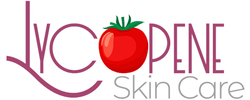
People of Hispanic descent have a diverse range of skin types and degree of pigmentation in their skin. It is well recognized that both of these groups are prone to an increased incidence of hyperpigmentary skin disorders such as melasma and post-inflammatory hyperpigmentation (PIH). Melasma is an abnormal pigmentation of the face, most commonly of the upper cheek, bridge of the nose, forehead, and upper lip that occurs in half of the woman during pregnancy. Birth control pills can also cause melasma. However, hormone therapy after menopause does not cause this condition. Post-inflammatory hyperpigmentation are brown spots formed around areas of inflammation that remain after the inflammation has subsided. This condition is often associated with adult acne and many other inflammatory skin conditions of the face and is due to an over stimulation of the pigment producing cells found in the skin. The treatment of this condition is no different for Latin-American or Hispanic population than it is for any group in the general population. The goal is simple, first eliminate the source of the inflammation and secondly, fade or lighten the areas of hyperpigmentation.
The treatment regimen for PIH is to eliminate the offending source of the inflammation. For acne, it is necessary to treat the acne either with topical therapies and/or oral antibiotics. Once the inflammation is reduced skin lightening agents like hydroquinone, retinoic acid, and fluocinolone acetonide may be used. These therapies are expensive and are not without side effects. In dark skinned populations hydroquinone use is responsible for a condition called exogenous ochronosis, a condition characterized by yellow subcutaneous deposits that are very difficult to treat. Retinoic acid can be drying and can cause skin irritation. Over the counter preparations of hydroquinone are of little value while 4% hydroquinone is available only with a doctor’s prescription. There is, however, an effective over the counter treatment that is highly effective for treating both acne and fading the brown spots seen with PIH as well as melasma. This product contains therapeutic levels of azelaic acid and kojic acid, both naturally occurring substances. Azelaic acid is effective in killing the bacteria causing adult acne while the combination of azelaic acid and kojic acid are as effective as prescription strength hydroquinone for lightening brown spots without any of the side effects. It is important that these two acids be in air tight containers prior to each use as they are both easily oxidized on exposure to the air. There is only one product on the market with which I am aware that meets these criteria and I think it is the best and most cost-effective product of its kind on the market.
In addition to the topical treatment of PIH and melasma it is very important to protect the skin against the damaging effects of environmental pollutants and the suns UV rays which can worsen these two conditions. A sun screen that offers specific UVA and UVB protection together with skin protecting benefits of an antioxidant, like lycopene, is essential. When choosing a sunscreen it is important for woman with melasma to be aware that a sun filter commonly found in many sunscreens, oxybenzone, is shown to have some estrogen-like activity and instead of reducing melasma may, in fact, worsen the condition.
In conclusion, you should use a product that is effective in clearing up adult acne and is as effective as prescription strength hydroquinone in fading and lightening areas of PIH and melasma. Together with a daily hydrating cream rich in antioxidants and sun filters for both UVA and UVB rays, there is now hope for patients with Latin-American, Hispanic, and Asian skin types who suffer from post-inflammatory hyperpigmentation and melasma.

